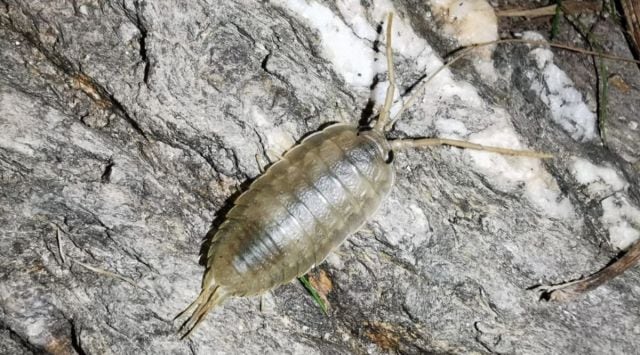Light pollution could confuse an important ‘natural recycler’ species
Diffused light pollution from cities and towns could confuse sea slaters—a species of woodlouse—and interfere with their ability to camouflage themselves.
 Sea slaters are not threatened or facing extinction but they are important to their ecosystem. (Image credit: University of Exeter)
Sea slaters are not threatened or facing extinction but they are important to their ecosystem. (Image credit: University of Exeter) Woodlice might look creepy but they are harmless and are an important part of many ecosystems. They mostly eat dead plant and fungal matter and act as important recyclers, just like worms. A new study has found that diffused light pollution in the night sky could be confusing a particular species of woodlouse.
Ligia oceanica is known by many names—sea slater, sea rock or “littoral zone woodlouse,” depending on who you ask. It lives near the sea and can be found in the United Kingdom and some other parts of Europe. The woodlouse species forage at night and can change their colour to blend in and hide themselves from predators.
But in a new study whose results are published in Proceedings of the Royal Society B, researchers have found that diffused pollution at night can confuse these creatures, rendering their camouflage useless.
The researchers tested the effects of a single-point light source and diffused light on sea slaters. Single-point light sources cast clear shadows, while the diffused light they tested was similar to the “skyglow” found near twins and cities due to light pollution. The point-light source did not affect their camouflage much, but the diffused light made the creatures turn paler while hiding against a dark background. This made them more visible.
“With night skies getting brighter worldwide, it’s important to understand how this will affect the natural world. We know artificial light causes all sorts of negative effects for animals and plants, but our results show that shadow-casting light can have very different impacts to diffuse skyglow, even when both have the same overall brightness,” said Kathryn Bullough, who led the study, in a press statement. Bullough is a PhD scholar at the University of Exeter.
According to Bullough, the sea slaters turned darker when confronted with a point-source light. They also tried to hide on dark stones and shadows when they were available. But diffused light confused them and caused them to become lighter, making them easier for predators to spot.
While the researchers cannot yet pinpoint how the diffused light interferes with the sea slaters’ colour-changing mechanism, it could be possible that they are responding to the light as if dawn was approaching.
While sea slaters are not a threatened or vulnerable species, they play an important part in their local ecosystem. They act as a kind of “natural recycler” by breaking down dead plant and animal matter. They can also be an important source of food for many birds that live on the seashore.







